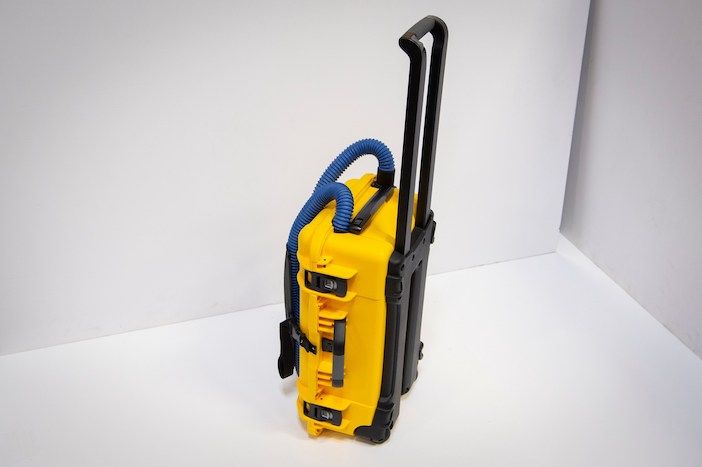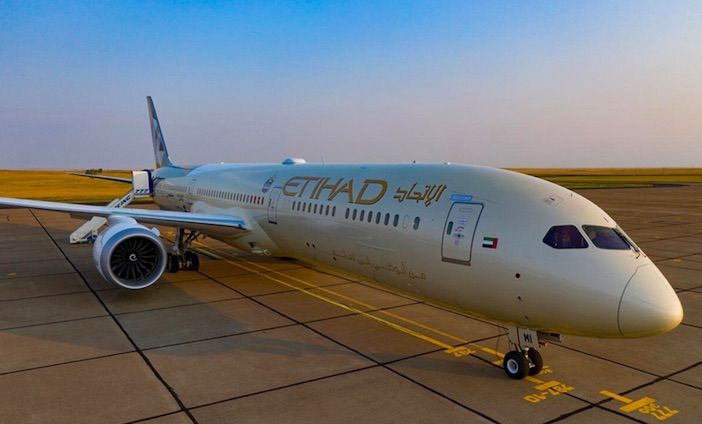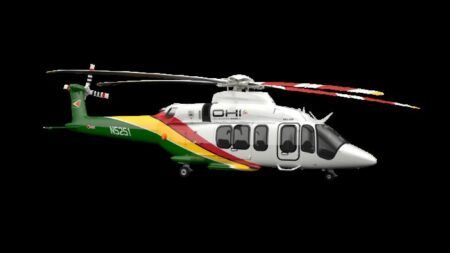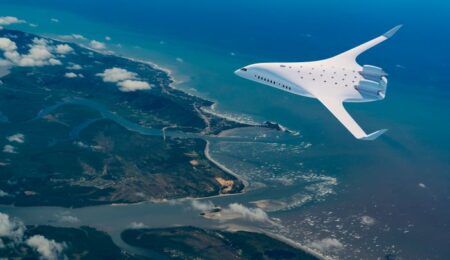Boeing’s ecoDemonstrator aircraft, a 787-10 Dreamliner, has been delivered to Ethiad Airways after completing a series of flight tests that looked at noise, airspace routing and other technologies.
The four weeks of flight testing began in late August with noise testing in Glasgow, Montana and concluded with a final flight from Seattle to Boeing’s delivery center in North Charleston, South Carolina that used a 50/50 blend of biofuel and jet fuel.
The ecoDemonstrator program, which has run every year since 2011, uses commercial aircraft to test new technologies and fast track them on to aircraft within two years, instead of the usual five to six years development cycle. The 2020 program is the first to use a Boeing 787-10, which will now be put into commercial service by Etihad.
As part of ecoDemonstrator programs, engineers are encouraged to bring in outside partners and knowledge and make mistakes faster. Mike Sinnett, vice president and general manager of product development for Boeing said, “The ecoDemonstrator program enables us to move from concept to reality really quickly.”
Doug Christensen technical Leader for the Boeing’s ecoDemonstrator program said, “This year’s program was planned virtually which added some challenges. Working with partners in this environment, and executing the program remotely was one of the highlights.
“The program was also compressed into a 27-day period. This required significant coordination and collaboration between the partners.
“It’s a quick program – the testing is very scripted up front and we go through a rigorous safety program to plan all of our testing.”
The ongoing Covid-19 pandemic impacted the way this year’s research program was run. Christensen said, “When we do the programs we have engineers on site checking and looking over the shoulders of technicians. We still had NASA and Safran at our site, but social distancing and other Covid-19 precautions made it a more difficult working environment.
“A lot of the work was done and checked using video communications to remote sites.”
Covid-19 also shaped the content of the R&D this year, with disinfection technologies among those that were tested on the 787-10. Other projects looked at, such as optimizing airspace routing, fuel and noise, were closer to ecoDemonstrator’s core goals of improving aviation’s sustainability and reducing its environmental impact.
Noise reduction
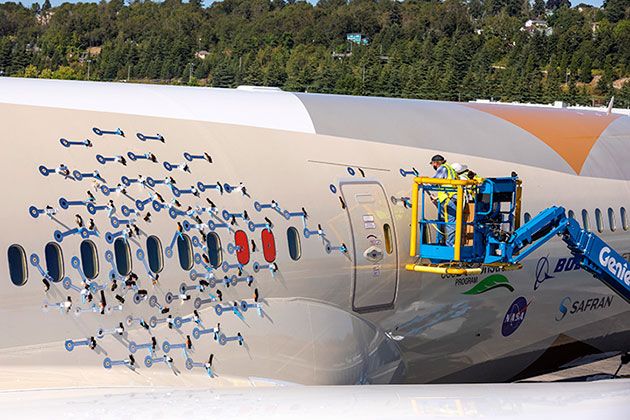
Boeing and Etihad worked with NASA and Safran on the noise tests, which are some of the most comprehensive ever conducted on an aircraft.
Christensen said, “The acoustic research is looking at understanding better how noise is generated by an aircraft and propagated to the ground in and around an airport.”
“It is the largest, most comprehensive noise study we have ever done. The 787-10 is already one of the quietest aircraft in the world.”
For the research 214 mics were fitted to the fuselage of the 787 and a 1000 mic blanket installed on the ground, to measure how the sound of the airplane is reflected on to the ground.
The flights were conducted over Glasgow in Montana, USA, a Boeing-owned facility in a remote location that is also the site of a former US Air Force base. “The flights were done early in the morning when we knew that ambient noise levels in the area would be low,” said Christensen.
Every pass over the ground mics produced around 12GB of data that engineers at Boeing, NASA and Safran are now analyzing. The data is being used to validate acoustics propagation models and to advance noise prediction research which will inform future aircraft designs, while Safran is validating noise reductions from deflectors it has fitted on to the 787-10’s landing gear.
Air traffic routing
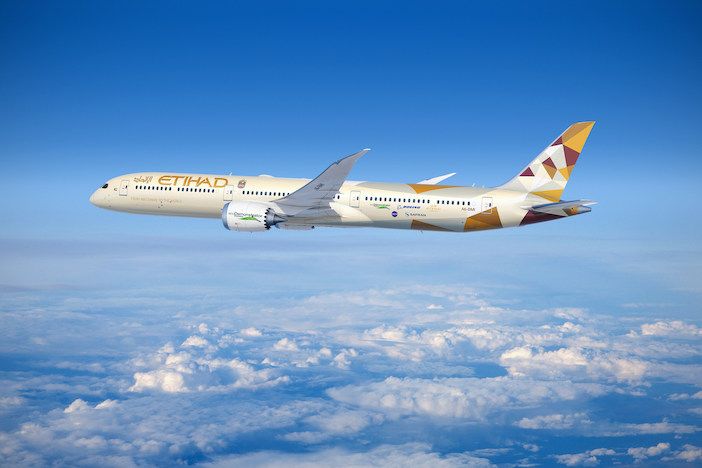
Two flights were conducted to test new air traffic routing and management systems being developed by NASA called Tailored Arrival Manager (TAM) and Trajectory Optimization, which aim to use airspace more efficiently to reduce carbon dioxide emissions and noise.
The program looked at the more efficient rerouting of flights using satellite positioning and reducing the use of holding patterns above airports using ground-based tracking systems. During the two flights delays and weather problems that might happen in the real world were simulated. “The research combined all of the information sources on the ground and on the aircraft to enable it to fly more efficiently,” said Christensen.
Biofuels
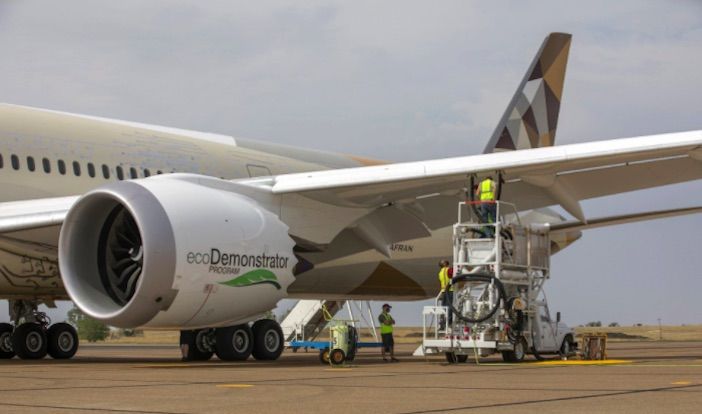
The 787 flew all of its ecoDemonstrator flights on a blend of sustainable fuel and traditional Jet-A fuel. The final flight of the program between Seattle and North Charleston, South Carolina used the maximum blend permissible under current rules, a 50/50 blend of fossil / biofuel, also the maximum sustainable blend Boeing has ever used on a commercial airliner
Around 50,000 gallons of the biofuel was used during the ecoDemonstrator program. “It was the largest volume ever produced by the supply chain at that 50/50 mix,” said Christensen.
The fuel was made from inedible agricultural wastes by World Energy and supplied to Boeing by EPIC Fuels and was certified by the Roundtable on Sustainable Biomaterials to reduce carbon emissions. Boeing predicts a 50/50 biofuel mix could lower overall carbon dioxide emissions of the 787-10 by 70% over its entire lifecycle.
Disinfection
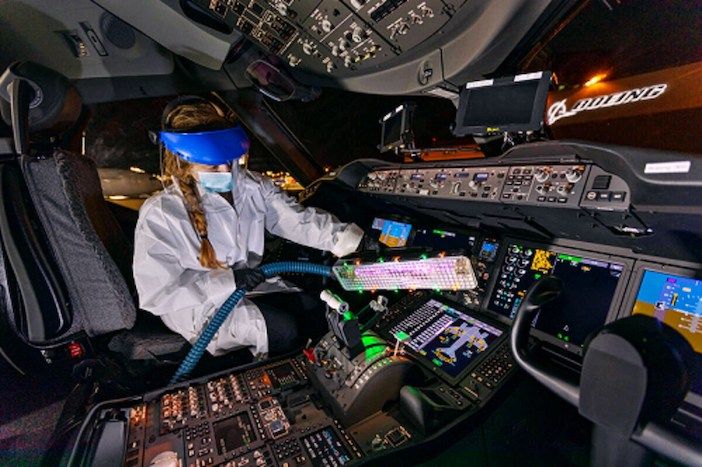
As part of Boeing’s Confident Travel Initiative to address Covid-19, a handheld ultraviolet (UV) light wand was also tested on the 787-10 during late August to determine its effectiveness in disinfecting flight decks and cabins.
The UV wand, which uses 222 nanometer UVC light, is a handheld device which disinfects the flight deck in 15 minutes. “We developed it to minimize the use of liquid disinfectants wherever there is lots of electronic components,” said Christensen. “We’ve now selected a partner to put this device into production.”
Following the successful tests, Boeing has entered into a patent and technology license with Florida-based sanitization company Healthe, under which the wand wlll be manufactured and distributed for use by Airlines before the end of the year.
